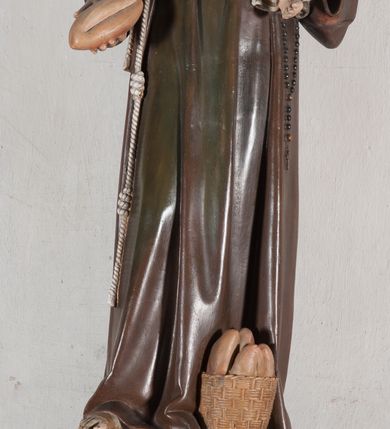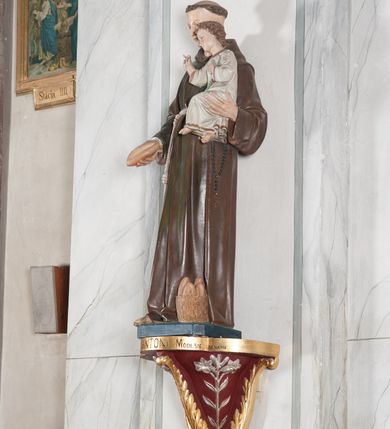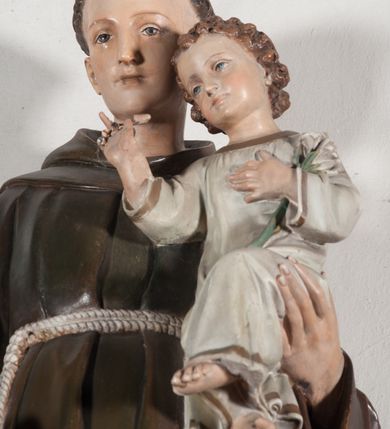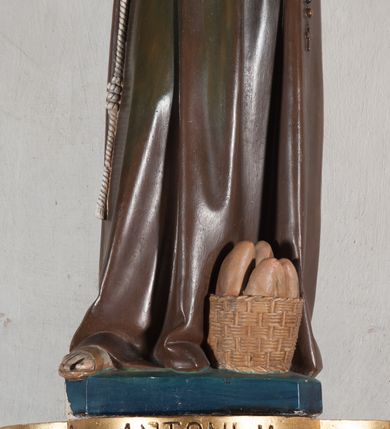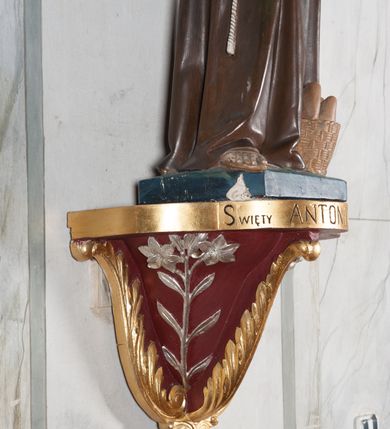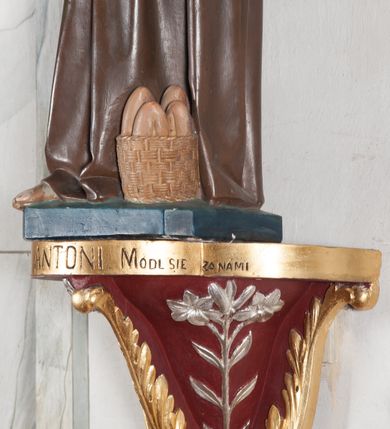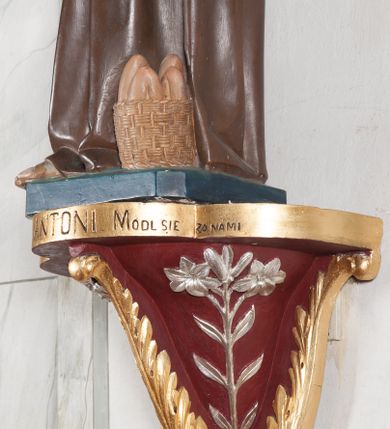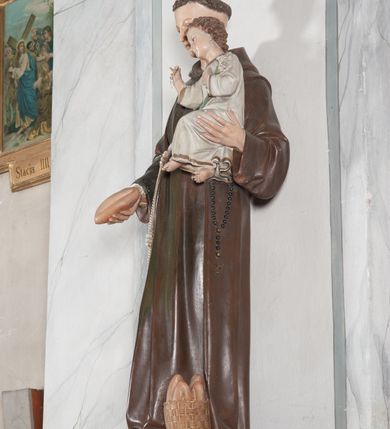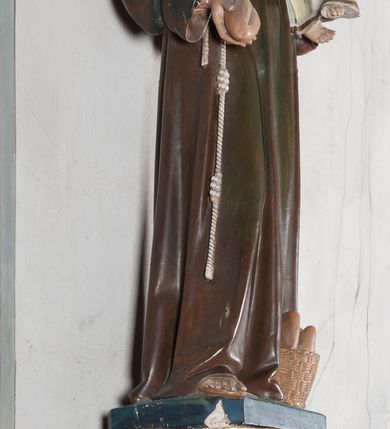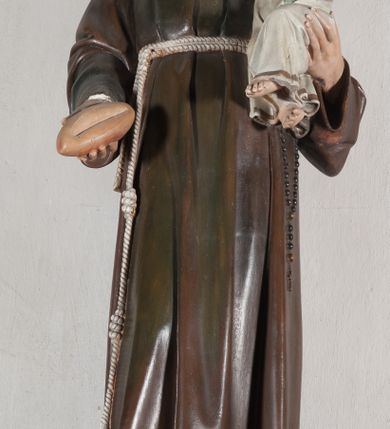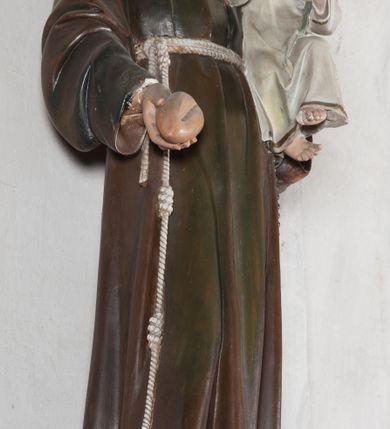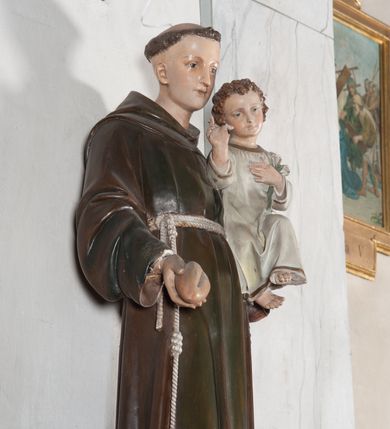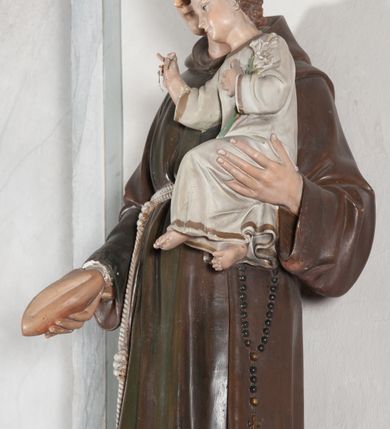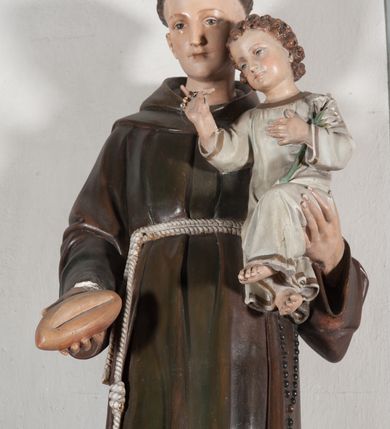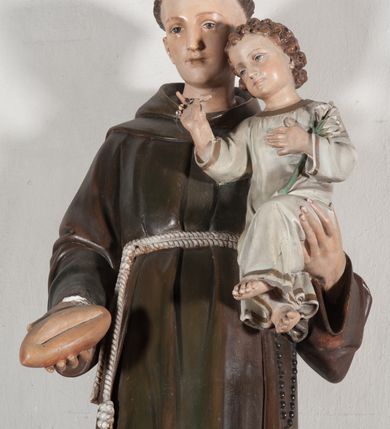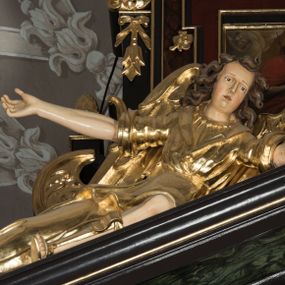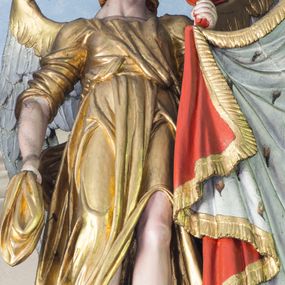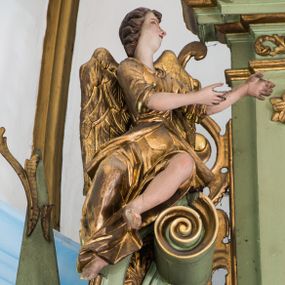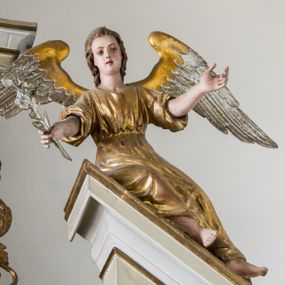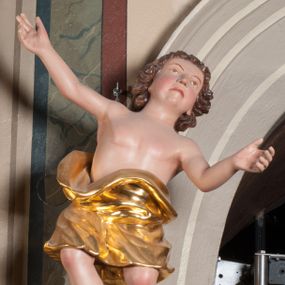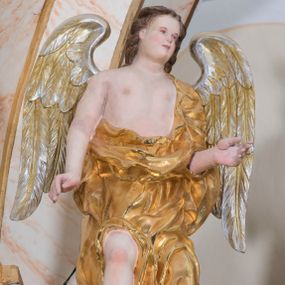
St. Anthony of Padua
Abstract
The sculpture was made in the early 1940s by Antoni Baran, an apprentice and collaborator of the Cracovian sculptor Wojciech Maciejowski. Antoni Baran is the only apprentice of Maciejowski known by name. He collaborated with his teacher, including at the restaurant of baroque furnishings of the Corpus Christi Church in Cracow, which began around 1939. In the early 1940s, the artists made many pieces of furnishings for the Church of Our Lady of Protection in Kamień. Antoni Baran worked mainly in wood and specialised in furnishing sacred interiors. Unlike Maciejowski, his works are characterised by a gentler folding of robes and a calmed expression. Saint Anthony of Padua lived at the turn of the 12th and 13th centuries. In iconography, he is depicted in a bronze Franciscan habit wearing a symbol of chastity – a lily and Baby Jesus sitting on a book or directly held in the hand of the saint. The saint's attribute is also a loaf of bread in memory of the miracle that was to take place thanks to Antoni in Lisbon. A woman after her son's death prayed to Saint Anthony, begging for the child to be brought back to life. She promised then that if the son would come alive, she would give the poor as much flour as the boy's body weighs. The saint listened to the prayers of the woman and the child came back to life, and inhabitants, in memory of this event, began to bake bread, which was then distributed to the needy.
Other works of this author
Persons related to work
Other works from this place
Similar works
By title
By category
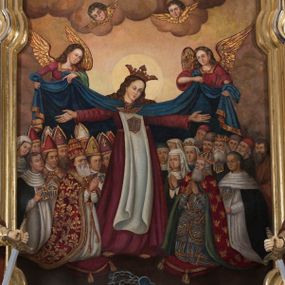
Our Lady of the Redemption of Slaves
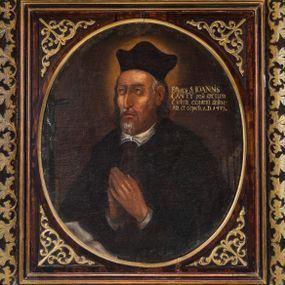
St. John Cantius
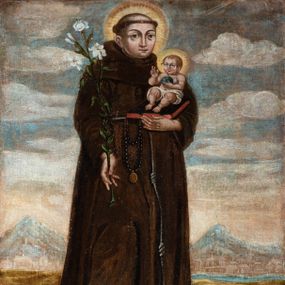
St. Anthony of Padua
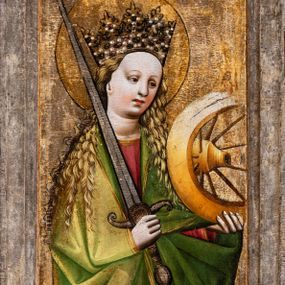
A front left wing of the old triptych of Our Lady of the Immaculate Conception
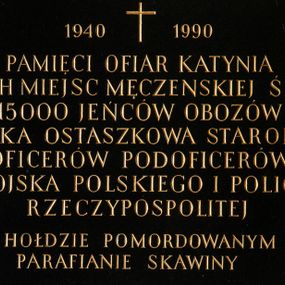
A plaque commemorating the victims of extermination
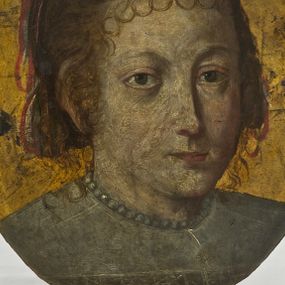
A portrait of Zofia Kochańska of the Swierczewski family
How to cite?
Justyna Kuska, "St. Anthony of Padua", [in:] "The Sacred Lesser Poland Heritage", 2026, source: https://sdm.upjp2.edu.pl/en/works/st-anthony-of-padua
